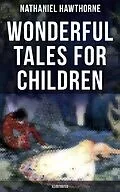Nathaniel Hawthorne's 'Wonderful Tales for Children (Illustrated)' is a captivating collection of stories that delve into the fantastical world of fairy tales and folklore. With vibrant illustrations bringing the tales to life, Hawthorne's writing style combines whimsy and moral lessons, making it an engaging read for both children and adults. The literary context of the book reflects a time when storytelling was a cherished form of entertainment, highlighting the importance of imagination and creativity. Each tale is woven with intricate details and rich imagery, showcasing Hawthorne's talent for creating magical and enchanting narratives. Nathaniel Hawthorne, known for his classic works such as 'The Scarlet Letter,' drew upon his own experiences and fondness for storytelling to craft this collection. His ability to blend elements of fantasy with moral teachings demonstrates his versatility as a writer, appealing to a wide audience. Hawthorne's fascination with the human condition shines through in these tales, offering readers a glimpse into his imaginative world and storytelling prowess. For those seeking a delightful journey into the realm of fairy tales and moral lessons, 'Wonderful Tales for Children' is a must-read. Hawthorne's timeless stories offer valuable insights wrapped in magical narratives, making it a book that will enchant and entertain readers of all ages.
Zusammenfassung
A Wonder-Book for Girls and Boys (1851) is a children's book in which Hawthorne rewrites myths from Greek mythology. It was followed by a sequel, Tanglewood Tales for Boys and Girls. The Snow-Image, and Other Twice-Told Tales is the final collection of short stories published by Nathaniel Hawthorne in his lifetime, appearing in 1852. Grandfather's Chair is a collection of tales on the Puritan History and along with Biographical stories contribute to the historical knowledge of the children.American novelist and short story writer Nathaniel Hawthorne's (1804-1864) significantly contributed to the Children's Literature. His ancestors include John Hathorne, the only judge involved in the Salem witch trials who never repented of his actions. Nathaniel later added a "w" to make his name "Hawthorne" in order to hide this relation.Contents:Twice-Told Tales (1837)Grandfather's Chair (1840)Biographical StoriesWonder Book For Girls and Boys (1851)The Snow Image and Other Twice Told Tales (1852)Tanglewood Tales For Girls and Boys (1853)
